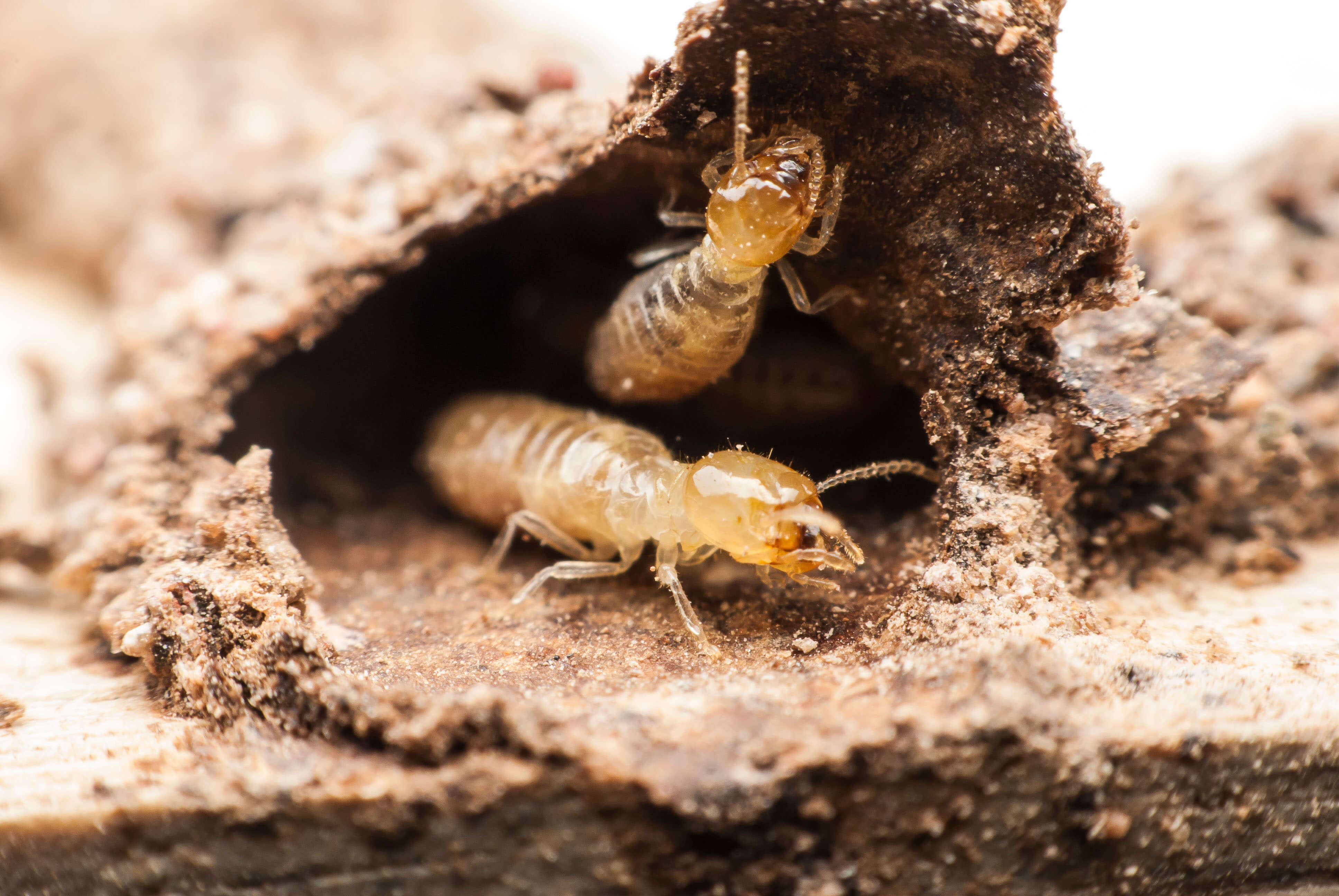
Termite Entry
The purpose of termite treatment is to keep termites from getting inside the house, so let’s take a look at how they get into our homes.
Subterranean Termites
Subterranean termite workers are the caste members that consume wood and they gain entrance into homes by building mud tubes that provide them a moist, protective passageway to get from one location to another. Mud tubes are not constructed by drywood termites, but more on that topic, later.
Exploratory Tubes
Workers generally gain access to houses by following their underground foraging tunnels, also known as exploratory tubes, to the foundation or underneath the house’s slab.
Once they reach these parts of the house, they will seek out a crack, gap, or other opening that allows them to enter through the foundation or slab and begin constructing mud tubes to wooden parts of the house.
Mud Tubes
Once in the house, they must travel in mud tubes in order to survive and continue to be mobile, consuming wood as they forage.
Workers may construct mud tubes on pipes or conduit that penetrates the slab or runs under the foundation.
Drop Tubes
Termite workers in crawl spaces sometimes also build free hanging mud tubes, also called drop tubes that extend from the ground upwards to the wooden floor joists and floor above ground.
Cracks & Gaps
Subterranean workers can enter through a crack or gap as small as 1/32 of an inch, so workers may gain entrance through expansion joints, bath traps and cracks caused by the slab or foundation settling over time.
Other Sources of Entry
Other likely sources of entry are cracks and gaps where patios, dirt filled porches, sidewalks, steps and chimneys are constructed adjacent to the foundation wall.
Still other locations for mud tubes are on supporting piers of houses with crawl spaces. Of all types of foundations, slab-on-ground construction is the most likely to be susceptible to termite entry.
Siding
A house with siding that is partially beneath the soil creates still another possibility for termites to gain entrance into a house.
When siding extends below the soil, termite workers can get into the house behind the siding and do so without mud tubes being visible or otherwise being seen before they reach the siding on the house.
Still another way that termite workers may enter a house is from any outside sources of wood such as a trellis or a planter box.
In these situations, termite workers can enter the outside wood source, build mud tubes throughout the wood source and eventually gain entrance inside through a crack, gap or suitable hole.
Damage
One might assume that subterranean termites are not apt to cause damage much beyond the lower parts of a house, but that assumption is not accurate at all.
At times, groups of termites will become separated from the main colonies, and if moisture is available from a source other than the soil, isolated above ground infestations will occur and the termite workers will not need to return to the soil.
Secondary Colonies
This kind of a colony is called a secondary colony and they obtain needed moisture from a roof leak or a plumbing leak in the wall.
In some situations, secondary colonies are found in the upper levels of houses and buildings consuming wood and proceeding with the normal behaviors involved in reproduction and colony growth.
Drywood Termites
Drywood termites get their name from the fact they live in dry, sound wood and require no connection with soil since the moisture they need comes from the wood they infest.
Entry
Therefore, these termites do not build mud tubes, unlike subterranean termites. Drywood termites get into houses when drywood termite swarmers fly directly to the wood they infest.
Some of their usual routes of entry include:
- Attic or foundation vents that are not screened.
- Cracks around window frames, door frames, soffits and roof sheathing.
- Infested furniture and other wooden items brought into the house.
Dampwood Termites
Dampwood termites infest wood that has a very high moisture content and are not as likely to infest a house as either subterranean or drywood termites.
Infestations in houses generally occur where there is damp wood in constant contact with the ground or if a water leak constantly keeps wood wet.
Entry
Dampwood termites are often introduced into a house via infested lumber and at times in mulch. Swarmers are strongly attracted to light and at times will be attracted to porch lights left on at night.
Should swarmers get inside, they create a small chamber in damp wood, mate and begin a new colony.
Don’t let termites eat through your home, schedule a free termite inspection with Orkin today.


-c7285d4e-0485-4ab5-ab8e-c1b84992db69.png)
-238b3860-d9a7-4b1e-b3fb-6372b2c25e97.png)
-01a3d8a2-2826-4df6-a61d-ff8234ecf3a6.png)

-bb172f9e-3a97-48f4-acc9-675ea104801c.png)



